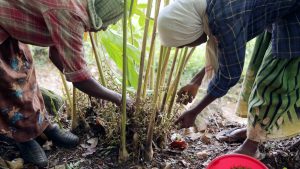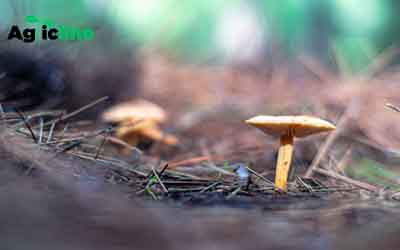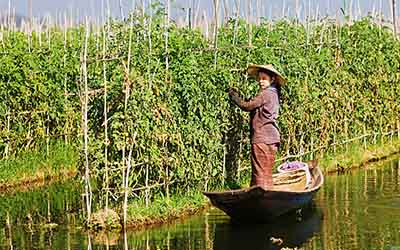Agroforestry is a sustainable land management system that integrates trees, crops, and livestock on the same piece of land to maximize the benefits and productivity of the overall farming system.
In Nigeria, agroforestry practices have gained significant attention due to their potential to address various environmental, economic, and social challenges faced by the country.
To enhance the adoption of agroforestry practices in Nigeria, there is a need for increased investment in research, extension services, and policy support.
Also, promoting community participation, sustainable management of natural resources, and strengthening partnerships among stakeholders can further contribute to the success of agroforestry initiatives in the country.
Aspect of agroforestry in Nigeria
Here are some key aspects of agroforestry in Nigeria:
Traditional Practices
Agroforestry has been practiced in Nigeria for centuries, particularly in the southern regions of the country, where various indigenous communities have integrated tree species with their agricultural practices.
Environmental Benefits
Agroforestry helps combat deforestation, soil erosion, and desertification. By incorporating trees in agricultural landscapes, it contributes to biodiversity conservation and carbon sequestration.
Economic Importance
Agroforestry systems provide multiple income streams for farmers. Trees can be used for timber, fruits, nuts, and other non-timber forest products, while crops and livestock contribute to food and income security.
Food Security
Agroforestry diversifies farm produce, reducing reliance on single crops and enhancing food security in the face of climate variability.
Adaptation to Climate Change
Agroforestry practices enhance the resilience of farming systems to climate change impacts, such as erratic rainfall patterns and extreme weather events.
Government Initiatives
The Nigerian government has recognized the importance of agroforestry and has implemented policies and programs to promote sustainable land use practices, including agroforestry.
NGOs and Research Institutions
Non-governmental organizations and research institutions in Nigeria actively work on agroforestry projects, promoting knowledge exchange, capacity building, and technological advancements in the field.

10 Benefits of Agroforestry in Nigeria
In Nigeria, agroforestry can offer several benefits to farmers, the environment, and society as a whole. Some of these benefits include:
- Agroforestry systems, such as alley cropping and intercropping with trees, can help enhance soil fertility. Trees can fix nitrogen and other nutrients in the soil, which benefits nearby crops and improves overall soil health.
- By incorporating trees into their farming practices, farmers can diversify their income sources. They can harvest fruits, nuts, or timber from the trees, in addition to the regular agricultural produce, providing multiple revenue streams.
- Agroforestry can contribute to carbon sequestration, helping to mitigate the effects of climate change and enhance the resilience of agricultural systems to changing climatic conditions.
- Agroforestry systems often support a greater diversity of plant and animal species compared to conventional monoculture farming. The presence of trees and other vegetation provides habitat and food sources for various wildlife, contributing to biodiversity conservation.
- The root systems of trees and woody vegetation help stabilize soil, reducing erosion and preventing loss of fertile topsoil during heavy rainfall or flooding events.
- Trees act as natural water regulators, reducing water runoff and increasing groundwater recharge. This can be particularly beneficial in areas prone to drought or erratic rainfall patterns.
- Agroforestry systems can enhance the resilience of crops to adverse conditions, such as extreme temperatures or pests. Some tree species can act as windbreaks or offer shade, protecting crops from damage.
- Agroforestry can improve the livelihoods of rural communities by providing additional sources of income and employment opportunities, thereby reducing poverty and enhancing food security.
- By integrating trees into farming systems, farmers can promote sustainable resource management. They can use trees for fuelwood, timber, and other products without causing deforestation or environmental degradation.
- Agroforestry practices can contribute to the long-term sustainability and productivity of agricultural land. Trees can help prevent soil degradation and enhance the overall health of the ecosystem, supporting continuous agricultural production for generations.
Challenges of agroforestry in Nigeria
Some of the key challenges of agroforestry in Nigeria include:
- Land ownership and tenure issues can be complex in Nigeria. Unclear land rights can hinder investment in agroforestry, as farmers may be reluctant to invest in trees that may take years to yield benefits if they are uncertain about land tenure security.
- Many farmers may not be familiar with the principles and practices of agroforestry. Lack of awareness and understanding of its benefits could lead to a reluctance to adopt agroforestry techniques.
- Availability and access to quality tree seedlings or planting materials can be limited in some areas, leading to challenges in establishing agroforestry systems.
- Establishing and maintaining agroforestry systems may require initial investments that some farmers may not be able to afford. The lack of access to credit and financial support can deter farmers from adopting agroforestry practices.
- In some cases, agroforestry practices may compete with traditional agricultural practices for land and resources. Farmers may be hesitant to adopt new techniques if they perceive potential risks or uncertainties.
- Agroforestry systems may be susceptible to pests and diseases that can affect both the tree component and the associated crops, requiring careful management and monitoring.
- The absence of supportive policies and institutional frameworks can hinder the adoption and expansion of agroforestry. Governments need to develop policies that incentivize and promote agroforestry practices.
FAQs about agroforestry in Nigeria
Below, you will find the answers to the most asked questions relating to agroforestry in Nigeria;
What types of agroforestry systems are practiced in Nigeria?
In Nigeria, various agroforestry systems are practiced, including alley cropping (planting rows of trees between crop rows), silvopastoral systems (combining trees with livestock grazing), homegardens (small-scale systems around homesteads), and agroforestry parklands (integrating trees in agricultural landscapes).
Which tree species are commonly used in Nigerian agroforestry?
Several tree species are used in Nigerian agroforestry, such as Acacia senegal, Leucaena leucocephala, Faidherbia albida, and various fruit trees like mango, citrus, and guava, depending on the region and specific agroforestry system.
How does agroforestry contribute to food security in Nigeria?
Agroforestry helps improve food security in Nigeria by diversifying agricultural production, providing additional sources of income, enhancing soil fertility, and reducing the risk of crop failure through increased resilience to climate change.
How can farmers get started with agroforestry in Nigeria?
Farmers interested in adopting agroforestry practices can seek assistance from agricultural extension services, NGOs, or government agencies. They can also attend training programs or workshops that focus on agroforestry techniques and best practices.
Can agroforestry be a solution to climate change in Nigeria?
Yes, agroforestry can be a solution to climate change in Nigeria and globally. By sequestering carbon in trees and soils, agroforestry helps mitigate greenhouse gas emissions, making it an important strategy for climate change adaptation and mitigation.
Recommendations
Artificial intelligence in agriculture projects (You don’t want to miss reading about this one)



